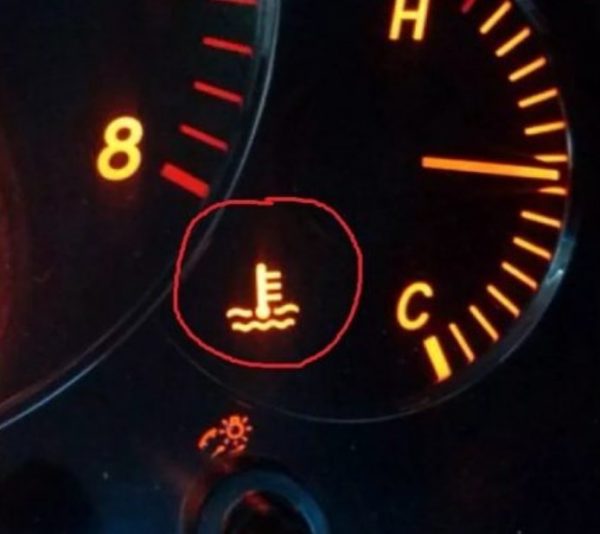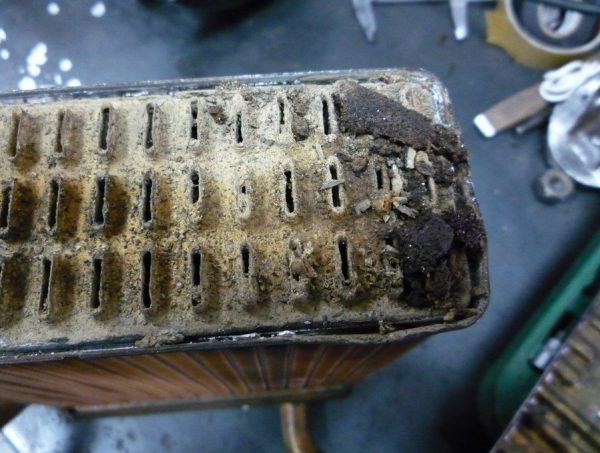
We independently wash the radiator without removing it from the car
Content
No internal combustion engine can operate without proper cooling. There are many rubbing parts in the motor. If heat is not removed from them in a timely manner, the engine will simply jam. The radiator is a key element of the automotive cooling system. But he also needs regular flushing. Let's figure out how to perform this procedure yourself.
Why does the radiator get dirty?
The reason for the external contamination of the radiator is obvious: dirt gets on it directly from the road. The device is located in the engine compartment and has no special protection. In the best case, a small shield can be installed under the radiator to prevent large stones and debris from getting into the edges of the device.

There are two reasons for internal pollution:
- dirt enters the cooling system from the outside. If there are cracks in the radiator hoses or in the radiator itself and the tightness of the system is broken, then its clogging is only a matter of time;
- the radiator is dirty due to poor antifreeze. It is no secret that it is not so easy to find high-quality antifreeze today. The market is literally flooded with fakes. Antifreezes from well-known brands are especially often counterfeited.
Both dirty and fake antifreeze contain many impurities. The radiator gets very hot during operation. Sometimes antifreeze can even boil, and the impurities contained in it form scale, which impedes the circulation of the coolant. Which leads to overheating of the motor.
When to flush the radiator
Here are signs that the cooling system is clogged:
- the engine quickly overheats even in the cold season, after which power drops appear, which are especially noticeable when trying to accelerate;
- the “coolant” light on the dashboard is constantly on, although there is antifreeze. This is another typical sign of a clogged radiator.
 The constant burning of the "coolant" light indicates a clogged radiator
The constant burning of the "coolant" light indicates a clogged radiator
To avoid the above problems, car manufacturers recommend flushing the cooling systems at least every 2 years.
Various ways to flush the radiator without removing it
You can flush the radiator with various fluids. And from the tools, the car owner only needs an open-end wrench to unscrew the drain plug in the cooling system. The flushing sequence itself differs only in the type of fluid used and consists of the following steps:
- The car engine starts, idles for 10 minutes, then it should be turned off and allowed to cool for 20 minutes.
- The drain plug is unscrewed. The old antifreeze is drained off. In its place, flushing liquid is poured.
- The engine starts up again and runs for 10-15 minutes.
- After the engine has cooled down, the fluid is drained. Distilled water is poured in its place to remove the remaining detergent from the radiator.
- New antifreeze is poured into the system.
Flushing with special products
In any auto parts store, you can find special compounds for flushing car cooling systems. There are many of them, but the most popular among motorists are two fluids: LAVR and Motor Resource.
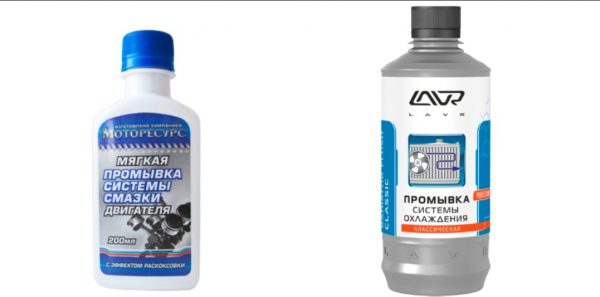
They are distinguished by an optimal ratio of price and quality. The flushing sequence is shown above.
Citric acid wash
The acid dissolves scale well. To create an acidic environment in the radiator, drivers successfully use a solution of citric acid in water.
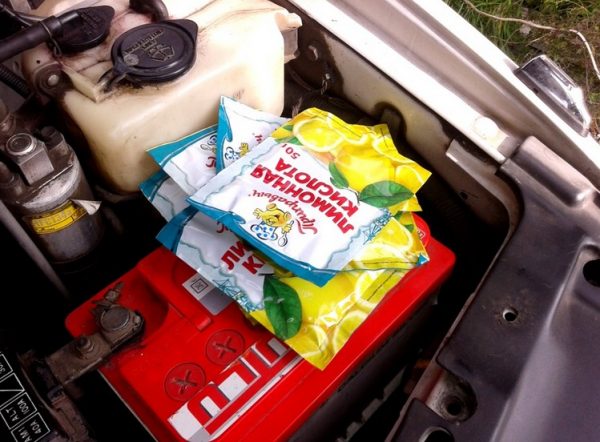
Here are the main features of the process:
- the solution is prepared in a proportion of 1 kilogram of acid per 10-liter bucket of water. If the radiator is not clogged too much, then the acid content can be reduced to 700 grams;
- flushing is carried out according to the scheme given above, with the exception of one important point: the hot acidic solution is not drained from the system immediately, but after about an hour. This allows you to achieve the best effect.
Video: flushing the radiator with citric acid
About rinsing with distilled water
Distilled water is very rarely used as a standalone detergent. This is done only with small contamination of the radiator. The reason is simple: water does not dissolve scale. It only washes away the debris and dirt accumulated in the radiator. It is for this reason that distilled water is usually used only for flushing the radiator after the main detergent.
Flushing with Coke
Coca-Cola has many non-standard uses. This includes flushing the radiator.
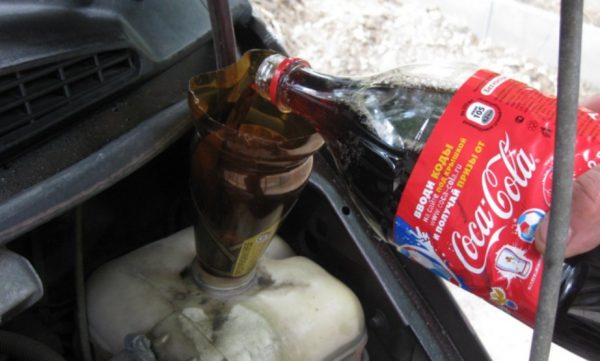

Once in the cooling system and warmed up, the drink quickly dissolves even a very thick layer of scale. But there are two important points:
- the operating time of the motor during flushing should be no more than 3 minutes. Then the motor is turned off, and the drink is drained from the system only after half an hour;
- rinse the system with water after Coca-Cola very carefully. The drink contains a lot of sugar. And it can settle on the radiator tubes.
How not to flush the radiator
Here's what is not recommended to pour into the radiator:
- tap water. It contains many impurities and inorganic salts. When such water boils, even more scale forms in the radiator;
- acetic acid solution. Acetic acid is good for washing electric kettles, but it is better not to pour it into the radiator. It will not only dissolve the scale, but also corrode the radiator pipes.
Cleaning the external elements of the radiator
The best option is to flush the radiator with water under pressure. This can be done both in your garage (if you have a suitable compressor), and at the nearest car wash.
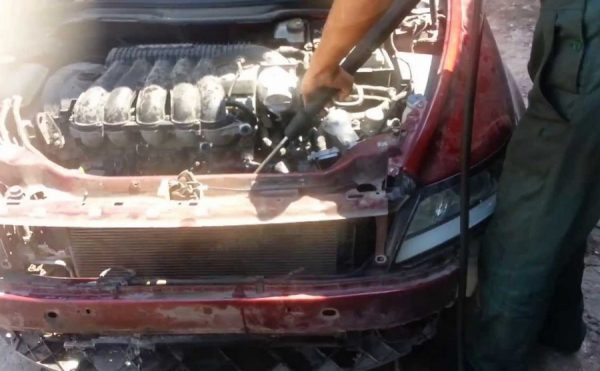

This cleaning method perfectly removes even the smallest dirt, such as poplar fluff, crammed between the fins of the radiator. But you need to remember the following:
- the water pressure should not be too strong, since the radiator fins are very thin and easily deformed;
- there should be no aggressive chemical additives in the water. Rubber hoses with clamps and gaskets are attached to the radiator. Harsh detergents can corrode all of this, and the cooling system will lose its tightness.
How to avoid contamination of the radiator
It will not be possible to completely isolate the radiator from dirt. All a car enthusiast can do is to keep the radiator from clogging up for as long as possible. This can be achieved in the following ways:
- use only high quality antifreeze recommended by the car manufacturer. The brand and type of coolant can be found in the operating instructions for the machine. And you can purchase such antifreeze in specialized service centers that have the appropriate certificates;
- Carry a supply of distilled water with you. When the driver discovers that there is no antifreeze, he usually fills the radiator with everything that comes to hand. Usually it is water from a river or stream. The amount of scale that forms in the radiator after such water is huge. Therefore, you should always have distilled water on hand. It will allow you to get to the garage and extend the life of the radiator.

 A supply of distilled water in the trunk will help avoid clogging the radiator
A supply of distilled water in the trunk will help avoid clogging the radiator
So, anyone who wants their car to work properly has a responsibility to keep the radiator clean. No special skills are required to flush it. All that is needed is an open-end wrench and a suitable detergent.


